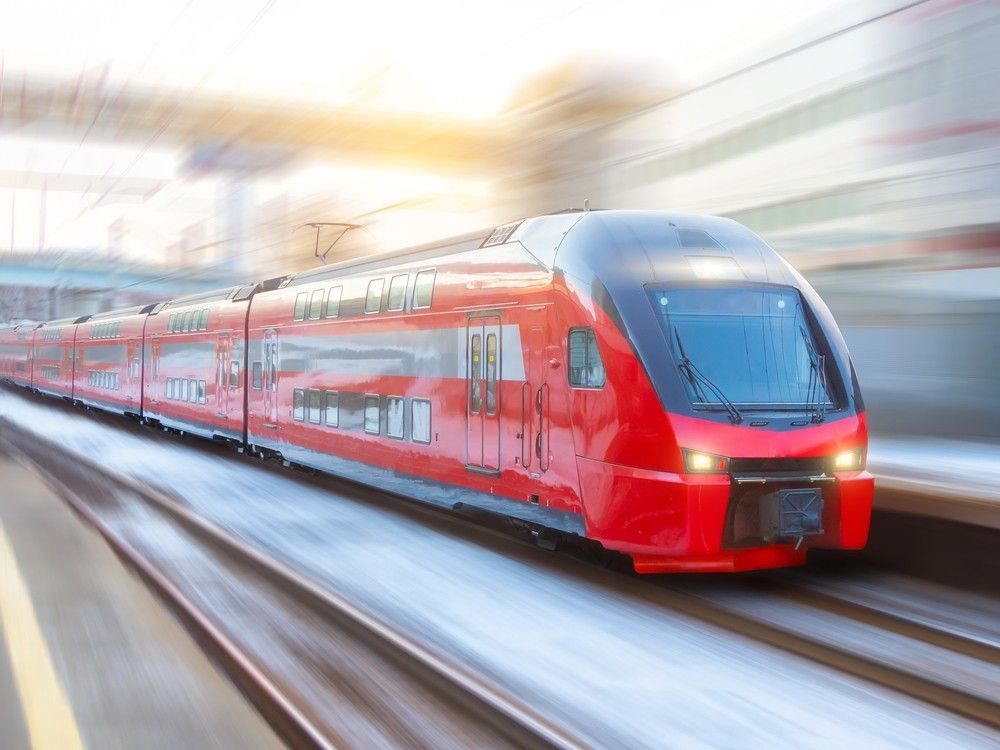Disagree, the cost $$$ of HSR vs HFR track is astronomically more.
There are lots of things that could be done with existing trackage to greatly increase train speed/velocity....which is our primary concern when speaking about the current problems plaguing VIA.
Things that would be a heck of a lot cheaper than +$200 billion... which is a lowball estimate for this project.
An old, sad story, involving more than railways, filled with hope and band aids....
Why Isn’t Canada a Shipping Superpower?
This country is terrible at transporting goods. The solution: more ports, more highways, more railroads.
By Kent Fellows
For a country defined by its vast geography, Canada is startlingly bad at transporting goods. We haven’t been serious about building transportation networks since the 1970s, and now our lack of infrastructure is hampering our ability to trade with other countries and even between provinces. For Canada to be resilient in a changing global economy, that must change now.
Some of our greatest building projects were born out of moments of national urgency. We constructed the TransCanada Pipeline in the years after the Second World War on the back of a post-war economic boom, and then the Trans-Canada Highway a decade later with leftover wartime stimulus. Letting our infrastructure languish in a global time of reform and innovation would have left us behind. Now we face a new crisis. A trade war with the United States is laying bare our outsized dependence on a single trading partner. We spent much of the last century strengthening our trade ties with the U.S. because it’s easy: we share a border, a language and a regulatory approach.
But try moving goods from Alberta to Ontario, or Saskatchewan to Nova Scotia. You’ll quickly find bottlenecks, missing links and backlogs at our overstretched ports. Our three cancelled pipeline projects—the Keystone, the Northern Gateway, and Energy East—are not the only blemishes on our record. Montreal and the St. Lawrence River are inaccessible to many modern container ships, which blocks them from entering Eastern Canada. The Port of Churchill faces limited commercial potential due to seasonal ice conditions and poor inland connectivity. And while jets can carry cargo to our territories, suitable runways remain limited.
For generations now, we’ve lost our nerve to build our own transportation networks. And that’s a problem: to leverage our vast natural resources and bulletproof our economy, we must become better at transporting goods: into the country, outside of it and within it.
We are certainly not short on ideas of how to do that. At the University of Calgary School of Public Policy, we’ve long been advocating for a northern corridor across Canada— an integrated transport, energy and digital network across the North. The concept dates back to the 1960s, but it never gained serious momentum. It’s a shame. We estimated in a 2018 paper that improved infrastructure in the north would increase the overall GDP of the territories to $6 billion—or $40,000 per resident. The impact on cost of living would also be huge. Meanwhile, twinning Route 185 from Quebec to New Brunswick would lower the delivered cost of traded goods and add up to $1.78 billion to Canada’s annual GDP. We could add another $9 billion to that by improving infrastructure—particularly rail—in Alberta.
Our ports also need updating: international shipping vessels and tankers are becoming larger than ever, but we’re not set up to accommodate a larger influx of containers. The Port of Vancouver, Canada’s largest, is out of space. Land costs are soaring, and physical expansion is nearly impossible. But there are other solutions. For example, Vancouver relies on Winnipeg to marshal containers for rail—why not invest in that co-ordination instead of dreaming up expensive land acquisitions? We could also reroute some shipments to Prince Rupert, a second, well-positioned port that’s still underutilized. Using it to its full potential would limit clogging the Vancouver port. Our ports also lack the technological capabilities of their European counterparts. Something as basic as digitally tracking containers would save us from leaving economic value on the table.
But we can’t stop at the water’s edge. We have to improve the rail and road links from our ports to our economic heartlands. Intermodal terminals, such as the Moorebank project connecting Sydney, Australia, to Port Botany, facilitate container transfers between rail and sea. They reduce reliance on road freight, alleviate congestion and lower transportation costs. Not to mention that this port will create approximately 6,800 jobs.
It’s not just about global exports either—Canada doesn’t trade well within itself. One flood in British Columbia in 2021 cut off major rail lines like the Trans Mountain pipeline and the Trans-Canada Highway and crippled our national supply chain because we had no alternate routes to transport the goods. That should have been a wake-up call to create more robust infrastructure, as climate change guarantees more of these disruptions.


www.thetrillium.ca





dailyhive.com


